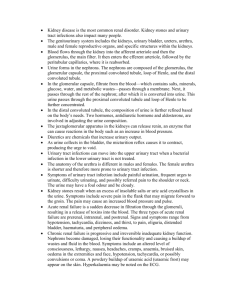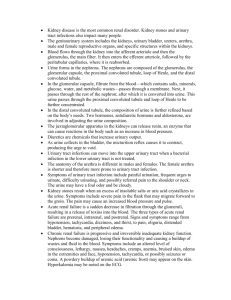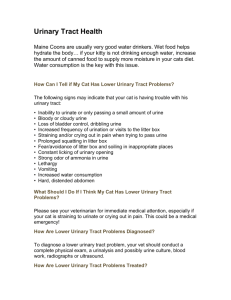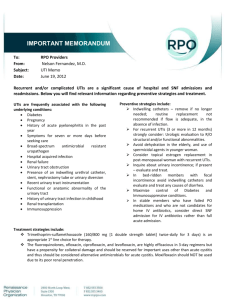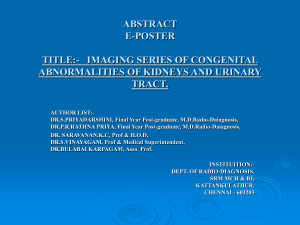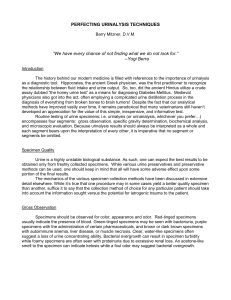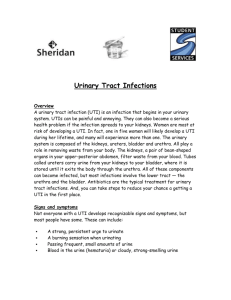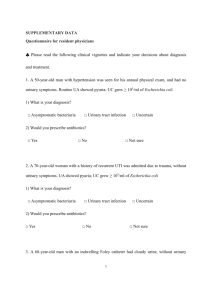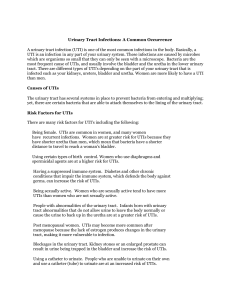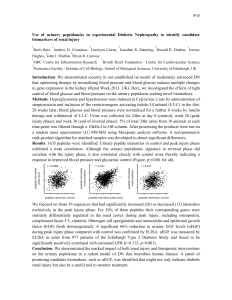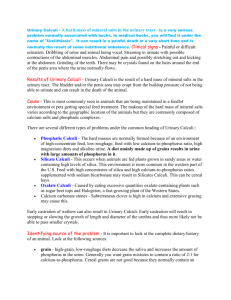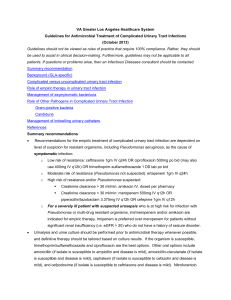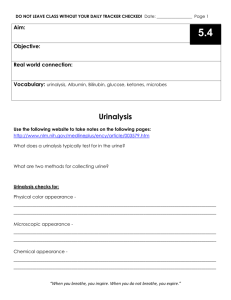Urinalysis Student Notes
advertisement
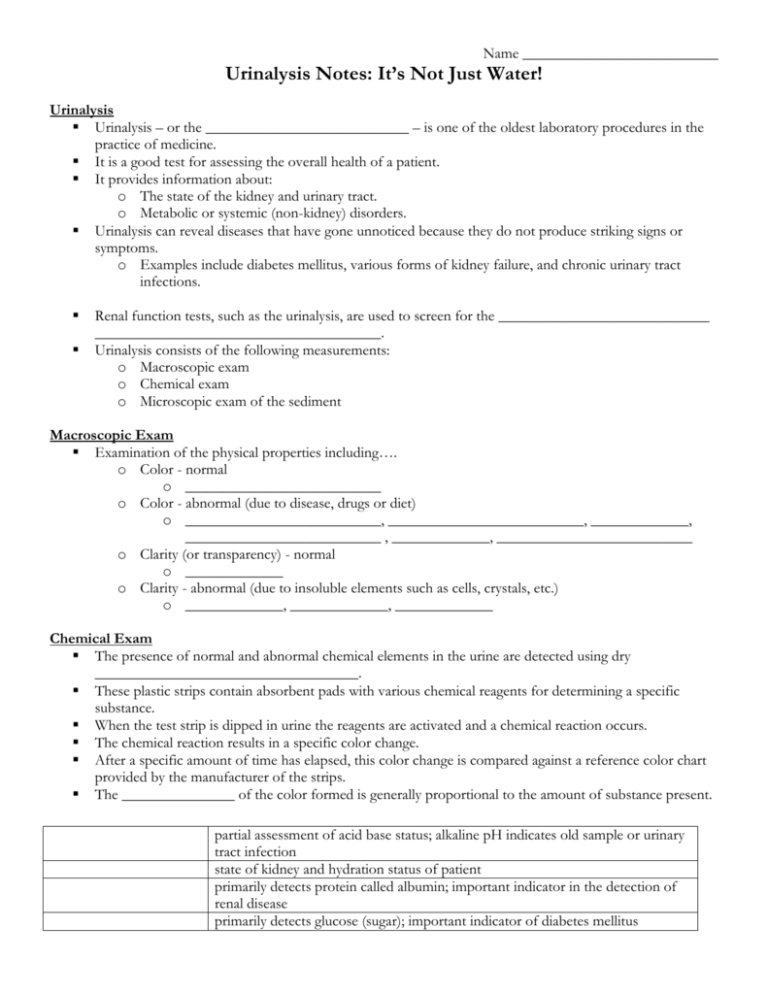
Name __________________________ Urinalysis Notes: It’s Not Just Water! Urinalysis Urinalysis – or the ___________________________ – is one of the oldest laboratory procedures in the practice of medicine. It is a good test for assessing the overall health of a patient. It provides information about: o The state of the kidney and urinary tract. o Metabolic or systemic (non-kidney) disorders. Urinalysis can reveal diseases that have gone unnoticed because they do not produce striking signs or symptoms. o Examples include diabetes mellitus, various forms of kidney failure, and chronic urinary tract infections. Renal function tests, such as the urinalysis, are used to screen for the ____________________________ ______________________________________. Urinalysis consists of the following measurements: o Macroscopic exam o Chemical exam o Microscopic exam of the sediment Macroscopic Exam Examination of the physical properties including…. o Color - normal o __________________________ o Color - abnormal (due to disease, drugs or diet) o __________________________, __________________________, _____________, __________________________ , _____________, __________________________ o Clarity (or transparency) - normal o _____________ o Clarity - abnormal (due to insoluble elements such as cells, crystals, etc.) o _____________, _____________, _____________ Chemical Exam The presence of normal and abnormal chemical elements in the urine are detected using dry ___________________________________. These plastic strips contain absorbent pads with various chemical reagents for determining a specific substance. When the test strip is dipped in urine the reagents are activated and a chemical reaction occurs. The chemical reaction results in a specific color change. After a specific amount of time has elapsed, this color change is compared against a reference color chart provided by the manufacturer of the strips. The _______________ of the color formed is generally proportional to the amount of substance present. partial assessment of acid base status; alkaline pH indicates old sample or urinary tract infection state of kidney and hydration status of patient primarily detects protein called albumin; important indicator in the detection of renal disease primarily detects glucose (sugar); important indicator of diabetes mellitus red blood cells, hemoglobin, or myoglobin (muscle hemoglobin); sensitive early indicator of renal disease normal product of fat metabolism; increased amounts seen in diabetes or starvation (extreme dieting) detects bilirubin (a product of red cell breakdown); indicator of liver function another by-product of red cell breakdown; increased amounts seen in fever, dehydration, hemolytic anemia and liver disease certain bacteria convert normal urine nitrate to nitrite; indicator of urinary tract infection detects esterase enzyme present in certain white blood cells (e.g., neutrophils, monocytes); indicator of urinary tract infection Microscopic Exam Most commonly used procedure for the detection of renal and/or urinary tract disease. This exam consists of reviewing the solid material suspended in the urine - both chemical and cellular. A variety of normal and abnormal cellular elements may be seen in urine sediment such as: o Red blood cells presence of a few is normal higher numbers are indicator of _________________________ result of ________________ at any point in urinary system o White blood cells a few are normal high numbers indicate inflammation or __________________ somewhere along the urinary or genital tract o Mucus look like long, ribbon-like __________________ common finding in urine sediment secreted by glands in the lower urinary tract o Epithelial cells cells are ________________________________________ normal cells that line the urinary and genital tract or renal tubules o Crystals A variety of normal and abnormal crystals may be present in the urine sediment. Crystals of calcium oxalate colorless octahedron found in ____________________________ Crystals of triple phosphate colorless, “coffin-lid” prism _________________________; not clinically significant Hyaline Casts colorless and fatter than mucus a few are normal may be increased after strenuous exercise form when ________________ solidifies in the nephron

